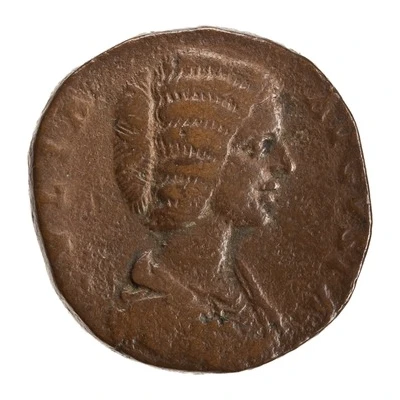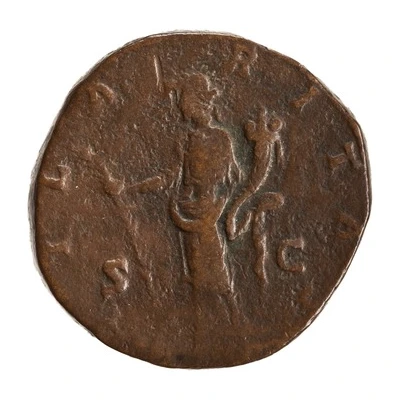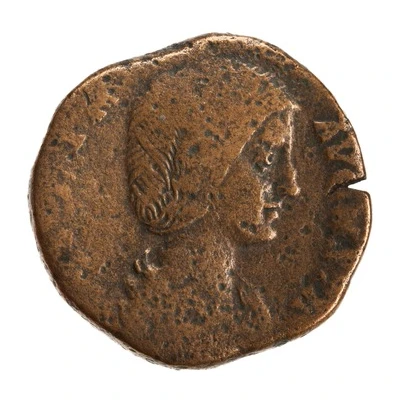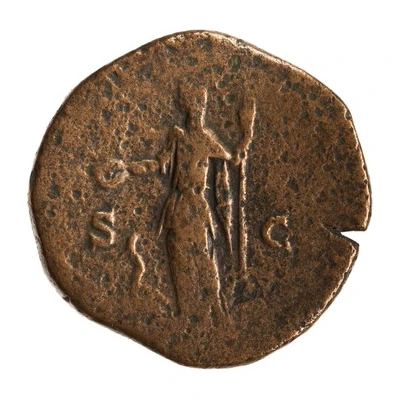


© American Numismatic Society (ANS)
Sestertius - Julia Domna HILARITAS S C; Hilaritas
| Bronze | 25 g | 31.5 mm |
| Issuer | Rome › Roman Empire (27 BC - 395 AD) |
|---|---|
| Empress | Julia Domna (193-211) |
| Type | Standard circulation coin |
| Years | 196-211 |
| Value | 1 Sestertius = ¼ Denarius |
| Currency | Denarius, Reform of Augustus (27 BC – AD 215) |
| Composition | Bronze |
| Weight | 25 g |
| Diameter | 31.5 mm |
| Shape | Round (irregular) |
| Technique | Hammered |
| Orientation | Variable alignment ↺ |
| Demonetized | Yes |
| Updated | 2024-10-06 |
| Numista | N#270346 |
|---|---|
| Rarity index | 97% |
Reverse
Hilaritas, draped, standing left, holding long palm in right hand and cornucopiae in left hand.
Script: Latin
Lettering: HILARITAS S C
Translation:
Hilaritas. Senatus Consultum.
Joy. Decree of the senate.
Comment
Mass varies: 20.56–28.84 g;Diameter varies: 28.5–34.46 mm;
Example of this type:
American Numismatic Society (ANS)
Source:
Online Coins of the Roman Empire (OCRE)
Interesting fact
The Sestertius coin featuring Julia Domna, the wife of Emperor Septimius Severus, is notable for its depiction of the Roman goddess Hilaritas (Hilarity) on the reverse side. This image symbolizes the joy and happiness that Julia Domna brought to the Roman people during her reign. The coin's design was meant to promote the idea of a happy and harmonious imperial family, which was an important aspect of Roman propaganda during that time.

